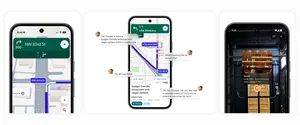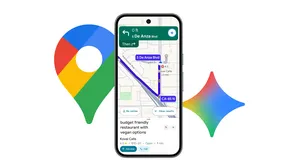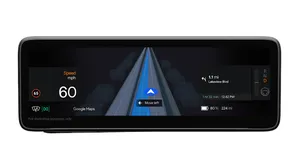One man's mission to add civil rights history to Google Maps
“I think in another life, I would have been a private investigator,” says Paul Kang. The Nashville resident is a paralegal for an immigration law firm, but it’s his hobby as a Local Guide on Google Maps that’s brought out his inner detective, turning him into something of a historian.
Paul and his family moved to Tennessee in 2012, and it was out of necessity that he was first introduced to Google Maps and soon after Local Guides, the community of everyday people who are passionate about sharing their experiences on Google Maps with reviews, photos, videos and more. Their efforts end up making Maps better for everyone. “My wife wanted to know where the post office near her work was, so I looked it up and sent her the map listing,” he says. “And when she went there, she told me it was all closed up.” The post office wasn’t open for business anymore. This sort of thing happened a few more times, and after becoming slightly frustrated, Paul realized he could use Google Maps to edit information. “I started closing things down, replacing duplicate listings,” he says. Eventually, Paul was doing much more than correcting listings. In 2017, the 1955 murder of Emmett Till resurfaced in the news when an interview with the woman who’d accused Till of harassing her—which led her husband and an accomplice to murder Till—admitted it wasn’t true. The tragic, senseless killing of the 14-year-old boy had been a catalyst in the civil rights movement, and the confession reignited interest in the story for Americans everywhere.
Paul first learned about what happened to Emmett Till when he was a young adult. “I think one of the things I still remember is that the jury acquitted Till’s murderers in 59 minutes, but that they would have [done it] faster if they hadn’t all gone together to get a bottle of pop before rendering the verdict.”
When he used Google Maps to try and find the site where Till’s body was found, a listing appeared—but didn’t seem like it was in the right spot according to what Paul had read. After using historical resources to learn more about the location, he was able to find it himself on Google Maps—and he decided that everyone else should be able to as well, so he loaded up his wife and kids and started the two-hour road trip south.
“I just thought, you know what, I’m going to do this, I’m doing to drive my whole family down there,” Paul says. When they got there, he says they discovered a museum dedicated to Emmett Till, but it was only open by appointment--information that hadn’t been listed in Google Maps. Fortunately, the museum was holding an event, and Paul’s family was able to go in. What Paul didn’t realize is how important the experience was for his wife, who was learning about Emmett Till for the first time. “We talked about it as she was going through it. It was shocking to her. It was a big download of information for her, and I know it’s stuck with her and informs her when she’s reading the news today, too.”
Paul's family stands outside the courthouse.
Paul and his family.
A missing sign here marks the site where Emmett Till's body was recovered. It was taken down due to vandalism and has since been replaced.
One of the images Paul captured with his 360-degree camera for Street View.
Using a 360-degree camera, Paul also took Street View photos of the site where Till’s body was found, and updated the Google Maps data so others can find it. He was even able to find the barn where Till was tortured and added that information to Maps.
Paul's gone on to add more historical information to Google Maps; he thinks he’s added some 50 historic landmarks, give or take. In 2018, for the 50th anniversary of Dr. Martin Luther King, Jr.’s assassination, various sites and memorials in Memphis were being constructed. “I waited to see if the city or some nonprofit maybe was going to add them to Google Maps, but I didn’t see anything,” he says. “So I just started adding them.”
He also made a point to update information about other memorials to Dr. King, including “I Have Been to the Mountaintop,” a sculpture unveiled in 1976 that was moved to a more prominent part of downtown Memphis. I AM A MAN plaza, an open air installation that opened in 2018 and dedicated to the sanitation workers’ strike of 1968, also wasn’t on Google Maps; Paul made sure both of these sites would surface, complete with historic information. Once when he went to take photos for Street View with his 360-degree camera, a few police officers acting as security at a site asked what he was doing. “I was like, ‘I’m making sure this gets on Google Maps, so people can find it!’”
News archives and web research power Paul’s exploration of the history of his new state and he says there’s work to be done to make sure this information remains accessible for future generations. “A lot of the websites cataloging information about these kinds of places with descriptions and photos are volunteer-led,” he says. “What if they decide not to or forget to renew their domain? Those websites could go away.”
Fortunately, Paul’s work won’t be going anywhere. “Even if all these websites go away, Google Maps will still be here.”







